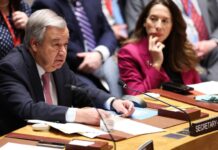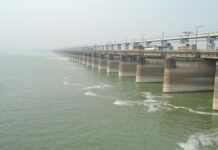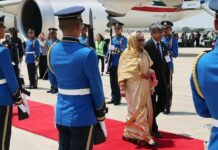Experts urge more allocation to achieve Prime Minister’s 2030 national goal
Roton Malo:
The National Leprosy Programme (NLP) has been running with a yearly budget of only Tk 49 Lakh which is hampering the overall activities and seemingly a hindrance towards achieving the goal of eliminating leprosy from the country by 2030.
Leprosy specialists, government officials, development workers, physicians and other health workers, said this is quite impossible to eradicate leprosy from Bangladesh with this small provision for NLP to provide leprosy-related services.
Dr Shafiqul Islam, former Programme Manager, NLP, under Directorate General of Health Services (DGHS), said he ran the whole programme with a budget of Tk 49 Lakh during his tenure. “The budget is still the same,” he said adding that NLP gets some extra provisions from World Health Organization (WHO) which is not sufficient.
From that tiny budget of Tk 49 lakh for the NLP, Tk 15 lakh is allocated for conducting research, Tk 11 lakh for training, Tk 1 lakh for sending medicines to upazila level by courier service, and Tk 22 lakh for office procurements, Dr Shafiqul Islam added.
According to Health Bulletin of the Directorate General of Health Services (DGHS) in 2019, there are three leprosy hospitals run by Bangladesh government, equipped with 130 beds providing secondary services. They are- 20-bed Leprosy Hospital in Nilphamari, 30-bed Leprosy Hospital in Dhaka’s Mohakhali and 80-bed Leprosy Hospital in Sylhet.
Besides, a couple of non-government organizations provide leprosy services in Bangladesh in coordination with NLP. Development workers urged the government to increase allocation to handle leprosy activities since the foreign donations for leprosy-oriented NGOs may stop anytime.
Health workers said the government must take the responsibility of socially stigmatized people and allocate sufficient budget for this endangered community.
Among the 17 Neglected Tropical Diseases (NTDs), Dengue Fever, Leprosy (Hansen’s Disease) and Rabies are very common in Bangladesh. Besides these three NTDs, snakebite is another concern in Bangladesh and very common in monsoon season. 
World Health Organization (WHO) on June 9th, 2017 categorized snakebite envenomation into the Category A of the Neglected Tropical Diseases.
Most of the NTDs are found in countries in Africa, Asia, and Latin America and NTDs are very common in tropical areas where people do not have access to clean water or safe ways to dispose of human waste.
Budgetary allocations to control the NTDs seemingly are insignificant which has been triggering the rate of infection gradually.
The consequences of leprosy-related deformity take an affected person to social exclusion and a person with leprosy-related disability suffer unspeakably in the society due to stigma that had been rooted in socio-psychology century ago.
Leprosy Disability & Government Social Safety Net Programme
According to a survey by the Japanese Society for Rehabilitation of Persons with Disabilities (JSRPD), the rate of disability (WHO Grade-2 disability) among newly affected leprosy patients in Bangladesh was nearly 9% in 2003.
The research titled ‘Leprosy and Disability in Bangladesh’ reveals that there is strong evidence that such impairments can be expected where diagnosis is delayed.
According to another research by The Leprosy Mission International-Bangladesh (TLMI-B), the income of 88% farmers with disabilities income reduced during the ongoing COVID-19 pandemic.
The study suggests emergency capital support for farmers with disabilities which can help them to compensate the loss they suffered due to COVID-19 lockdown.
Finance Minister AHM Mustafa Kamal, in his budget speech in 2020, informed that the government allocated Tk. 74,367 crore in Social Safety Net sector, which is 14.21 percent of total budget and 2.58 percent of GDP in FY2019-20.
He said “We’re implementing various programmes for the marginal communities besides helping the people with disabilities.”
“The government has provided seasonal assistance to about 10 lakh people living below the poverty line in each upazila and will expand such social protection programmes to curb the adverse effects of any future economic shock,” said Finance Minister.
Jjiptha Boiragee, programme support coordinator, TLMI-B, said a significant increase of budgetary allocation for national leprosy program and the people with leprosy-related disability and other disability will be a help NLP to achieve the national goal of eliminating leprosy by 2030.
“With a budget of only Tk 49 lakh, it is quite impossible to eliminate leprosy from the country by the targeted timeline,” he said.
Prime minister’s pledge to make Bangladesh a leprosy-free nation
Addressing the National Conference 2019 on Zero Leprosy Initiative by 2030 in Dhaka in 2019, Prime Minister Sheikh Hasina directed everyone to avoid negative attitudes and stop discriminating leprosy patients and instead take initiative for their proper treatment.
“I believe that we could build a leprosy-free Bangladesh much before the target 2030, if we all work sincerely in this regard,” said the prime minister.
She said “We have to discard the mentality that if anyone is affected by leprosy, the person should be sacked or isolated from the society.”

Bangladesh’s prime minister said leprosy patients would get cured to a large extent if all of the society shoulders responsibility to ensure their rights to coexist in society.
“I believe that we could build a leprosy-free Bangladesh much before the target 2030, if we all work sincerely in this regard,” she added.
Urging local pharmaceutical companies to produce medicines for leprosy, Sheikh Hasina said: “Many of our pharmaceutical companies are exporting their products to various countries. Our medicines are of very good quality.
“I would like to tell them that if they produce special medicines needed for leprosy patients and take measures to distribute them for free, we will reach our target (zero leprosy) very quickly.”
What is leprosy?
According to the World Health Organization (WHO), Leprosy, also known as Hansen’s disease, is a chronic infectious disease caused by Mycobacterium Leprae (a relative of TB).
Leprosy, one of the Neglected Tropical Diseases (NTD), primarily affects the skin, the peripheral nerves, mucosal surfaces of the upper respiratory tract and the eyes.
The first signs of leprosy are patches of skin which look paler than normal or sometimes nodules on the skin. It is known to occur at all ages ranging from early infancy to very old age.
Leprosy in Bangladesh
Bangladesh has achieved the WHO target of reducing the number of leprosy patients to one in 10,000 population in 1998.
Although the that target was achieved two decades earlier, still about 4,000 people are being diagnosed as affected by leprosy in Bangladesh.
According to information from NLP, a total of 2719 new people were infected by leprosy in 2020. The new leprosy case number in 2019 was 3,638.
Among the 3,638 persons affected by leprosy in 2019, a total of 252 people suffered from leprosy-related disability, NLP data shows.
According to the NLP, altogether 2,29,430 leprosy cases were detected in Bangladesh in between 1985 and 2020 and of those patients 221,761 were recovered during this period after receiving MTD treatment.





























